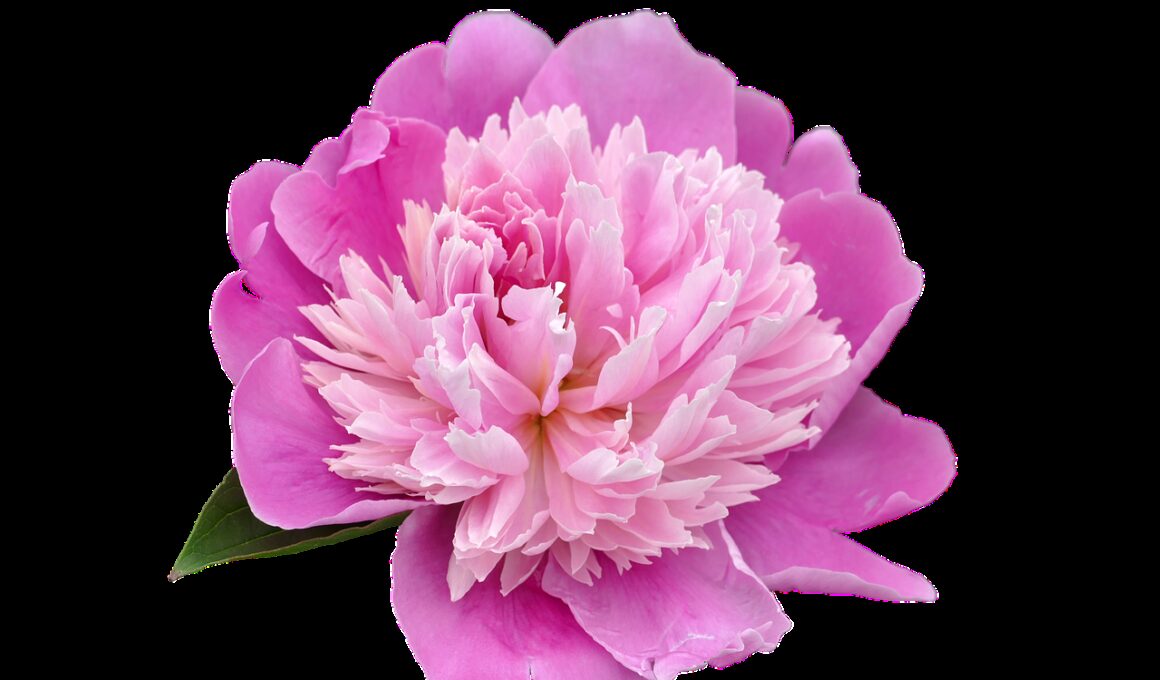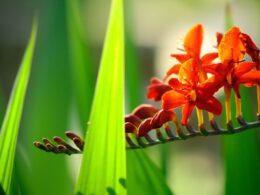Are you tired of planting new flowers every year? Do you want a garden that comes back year after year without fail? Then hardy perennials might just be the answer for you! These plants are known for their ability to survive harsh winters and come back stronger each spring. But do they really come back every year?
In this article, we’ll explore the world of hardy perennials and give you tips on how to ensure they return to your garden year after year. If you’re new to gardening or just curious about hardy perennials, you might be wondering what exactly they are. Hardy perennials are plants that live for multiple years and come back each spring. They are able to survive colder temperatures and harsh weather conditions, making them a popular choice for gardeners in areas with harsh winters.
But while hardy perennials are known for their ability to come back every year, there are still factors that can affect their survival. In the following sections, we’ll explore these factors and give you tips on how to ensure your hardy perennials come back strong each year.
Understanding Hardy Perennials
You’ll be amazed at how your garden can thrive with these plants that return season after season, bringing new life and beauty to your yard. These hardy perennials are a gardener’s dream come true, as they require minimal care and can survive harsh weather conditions. However, it’s important to note that proper perennial care is still necessary to ensure their longevity.
One of the key factors in caring for hardy perennials is providing winter protection. These plants go dormant during the colder months, but that doesn’t mean they’re completely immune to the elements. To keep them healthy and strong, it’s important to mulch around the base of the plant in the fall, which will help insulate and protect the roots from freezing temperatures.
In addition to winter protection, regular maintenance is also crucial for the health of hardy perennials. Deadheading spent flowers and cutting back foliage can encourage new growth and prevent disease. With a little bit of effort and attention, these plants will reward you with beautiful blooms year after year.
Factors That Affect Hardy Perennials
Factors affecting perennial plants’ ability to return annually include environmental conditions, soil quality, and proper care. Soil conditions are vital for the growth of perennials, as it affects the nutrients available to the plant. If the soil is too compact, water and nutrients may not be able to penetrate deep enough, and the roots may not be able to grow effectively.
Climate variability can also affect the growth of perennials, as changes in temperature and precipitation can stress the plants and affect their growth. To ensure the healthy growth of hardy perennials, it’s essential to maintain soil quality and provide the appropriate care. Here are a few tips to help you care for your perennials and ensure they come back year after year:
- Ensure the soil is well-draining and has adequate nutrients.
- Water the plants regularly, especially during dry spells.
- Prune regularly to remove dead or diseased plant material.
- Provide protection from extreme weather conditions, such as frost or heat waves.
By following these tips and keeping an eye on the soil conditions and climate variability, you can help your hardy perennials thrive year after year. With proper care, these plants can continue to provide beauty to your garden for many seasons to come.
Tips for Ensuring Hardy Perennials Return Every Year
To ensure that your hardy perennials return every year, there are a few key tips to keep in mind. First, regular pruning and maintenance are important to keep the plants healthy and promote new growth.
Second, fertilization is crucial to provide the necessary nutrients for the plants to thrive. Finally, mulching can help retain moisture and protect the plants during harsh weather conditions.
By following these simple steps, you can enjoy beautiful and healthy hardy perennials year after year.
Pruning and Maintenance
Make sure to give your plants the attention they need to thrive, and you’ll be rewarded with beautiful blooms that will fill you with a sense of pride and accomplishment. When it comes to hardy perennials, regular pruning and maintenance is essential to ensure they come back healthy and strong year after year.
Here are some tips to help you keep your plants in top condition:
-
Pruning techniques: Regular pruning helps to keep your plants healthy and encourages new growth. Cut back dead or damaged stems with a clean pair of shears. Make sure to prune at the right time of year for your specific plant species.
-
Disease prevention: Keep an eye out for any signs of disease or pests on your plants. Remove any infected or infested leaves and dispose of them properly to prevent the problem from spreading. Consider using organic pest control methods to avoid harmful chemicals.
By following these simple steps, you can help your hardy perennials thrive and come back bigger and better every year. With a little bit of attention and care, you can enjoy a beautiful and healthy garden that’ll bring you joy for years to come.
Fertilization
You’ll want to make sure your garden is bursting with color and nutrients for your hardy perennials so they can continue to flourish with proper fertilization techniques. Soil nutrition is the foundation for your plant’s health, so it’s important to make sure you’re providing them with the right nutrients. Organic fertilizers are a great option for hardy perennials because they release nutrients slowly and provide a balanced mix of macro and micronutrients.
When choosing an organic fertilizer, it’s important to pay attention to the NPK ratio (nitrogen, phosphorus, and potassium) and the micronutrients it contains. A balanced fertilizer will provide your plants with the necessary nutrients they need to grow and thrive. Check out the table below for a quick reference guide on some popular organic fertilizers and their NPK ratios. By providing your hardy perennials with the proper soil nutrition, you’ll ensure they come back year after year with even more vigor and beauty.
| Fertilizer | N-P-K Ratio | Micronutrients |
|---|---|---|
| Fish Emulsion | 5-2-2 | Calcium, Magnesium, Sulfur |
| Bone Meal | 4-12-0 | Calcium, Phosphorus |
| Blood Meal | 12-0-0 | Iron, Nitrogen, Phosphorus |
| Compost | Varies | Varies |
Mulching
Mulching is an essential step in maintaining a healthy garden, as it helps retain moisture and regulate soil temperature for optimal plant growth. There are numerous benefits of mulching, including weed suppression, improved soil structure, and reduced erosion. It also prevents soil compaction caused by heavy rain, which can damage plant roots and hinder their growth.
There are different types of mulch materials you can use for your garden, such as organic and inorganic mulches. Organic mulches, such as wood chips, straw, and leaves, decompose over time and add nutrients back to the soil. In contrast, inorganic mulches, such as gravel, stones, and plastic, do not break down and can last for years.
Regardless of the type of mulch you choose, make sure to apply it evenly and at the right depth to ensure maximum benefits.
Common Hardy Perennials That May Not Return Every Year
Some popular hardy perennial plants may not always return to your garden every year. While most perennials are known for their ability to come back year after year, there are a few that may struggle to survive. This can be due to a variety of factors, including disease resistance, soil pH, and environmental factors.
One example of a perennial that may not return every year is the peony. Peonies are beautiful plants that produce large, showy flowers in a variety of colors. However, they can be susceptible to diseases such as botrytis blight, which can cause them to wilt and die. Peonies also prefer a slightly acidic soil pH, so if your soil is too alkaline, they may struggle to thrive.
Another perennial that may not return every year is the delphinium. Delphiniums are tall, elegant plants that produce spikes of flowers in shades of blue, pink, and white. However, they can be prone to diseases such as powdery mildew, which can cause their foliage to turn yellow and die back. Delphiniums also prefer a rich, well-draining soil, so if your soil is too heavy or compacted, they may not come back the following year.
It’s important to keep in mind that while some perennials may struggle to return every year, there are steps you can take to help them thrive. This includes monitoring their health and growth, providing them with the proper soil conditions and nutrients, and taking steps to prevent diseases and pests. By taking these steps, you can help ensure that your hardy perennials come back year after year, bringing beauty and joy to your garden.
Conclusion and Final Thoughts
Now that you know some common hardy perennials that may not return every year, you may be wondering if any hardy perennials will reliably come back year after year. The answer is yes!
In fact, hardy perennials are known for their ability to survive seasonal changes and come back stronger each year. Gardening with hardy perennials offers many benefits.
For one, you don’t have to replant them each year, saving you both time and money. Additionally, they often require less maintenance than annuals, as they have deeper root systems that help them survive drought and extreme temperatures.
Of course, it’s important to remember that every garden is different, and even hardy perennials may struggle in certain conditions. However, with proper care and attention, you can enjoy the beauty and reliability of hardy perennials for years to come.
Frequently Asked Questions
What are some common pests and diseases that affect hardy perennials?
To keep your hardy perennials healthy year after year, it’s important to be proactive in dealing with pests and preventing diseases.
Some common pests that can affect your perennials include aphids, spider mites, and slugs. To prevent these pests from taking over your garden, consider using natural remedies such as insecticidal soap or neem oil.
It’s also important to keep an eye out for signs of diseases such as powdery mildew or black spot, and to remove any infected leaves or plants immediately.
By being vigilant and taking preventative measures, you can ensure that your hardy perennials will thrive and come back stronger every year.
How can I propagate hardy perennials?
If you want to expand your garden without spending too much money, propagating hardy perennials is the way to go. The benefits of propagation are clear: you’ll get new plants that are genetically identical to the parent plant, so you know what you’re getting.
The best time to propagate is in the spring or early summer, when the plant is actively growing. You can propagate by taking stem cuttings, root cuttings, or by dividing the plant. It’s important to make sure that the new plant has enough water, nutrients, and light, so it can establish itself properly.
With a little patience and care, you’ll have a beautiful garden filled with healthy, vigorous plants.
Are there any specific soil requirements for hardy perennials?
To ensure your hardy perennials thrive, it’s important to pay attention to the soil composition and nutrient levels. A well-draining soil with good organic matter is ideal for most perennials.
It’s also important to consider the pH level of the soil, as different plants prefer different levels of acidity. For hardy perennials, a slightly acidic soil with a pH between 6.0 and 7.0 is typically best. If the soil is too alkaline or acidic, it can affect the availability of nutrients and ultimately impact the plant’s growth.
By providing the right soil conditions, you can help your hardy perennials come back year after year, and thrive in your garden.
Can hardy perennials be grown in containers?
Container gardening is a great way to grow hardy perennials. These plants can be grown in containers and easily moved indoors during the winter months, using overwintering strategies to ensure their survival.
When planting in containers, make sure to choose a pot that is the appropriate size for your plant and use a high-quality potting mix. During the growing season, water your plants regularly, and fertilize as needed.
When winter approaches, move your plants indoors to a cool, dark location, and keep the soil moist but not waterlogged. With proper care, your container-grown hardy perennials will come back year after year, providing you with beautiful blooms and foliage season after season.
What is the average lifespan of a hardy perennial?
Hardy perennials can vary greatly in lifespan, with some lasting only a few years and others living for decades. The factors affecting longevity include the plant’s genetics, growing conditions, and how well it’s cared for.
Some perennials, like daylilies and peonies, can live for up to 20 or 30 years, while others, such as delphiniums and lupines, may only survive for a few years.
To ensure the longest possible lifespan for your hardy perennials, be sure to plant them in the right location with adequate sunlight, soil, and water, and provide them with proper care and maintenance.
With these factors in mind, you can enjoy your hardy perennials for many years to come.
Conclusion
Congratulations on making it to the end of this article! By now, you should have a good understanding of what hardy perennials are and how to ensure they return year after year. Remember, when it comes to these plants, proper preparation and care are key.
One of the best things about hardy perennials is their ability to come back year after year, bringing beauty and life to your garden. With the right care and attention, you can enjoy these plants for many seasons to come.
So, go ahead and plant those hardy perennials with confidence, knowing that with a little bit of effort, they will reward you with their beauty time and time again.









